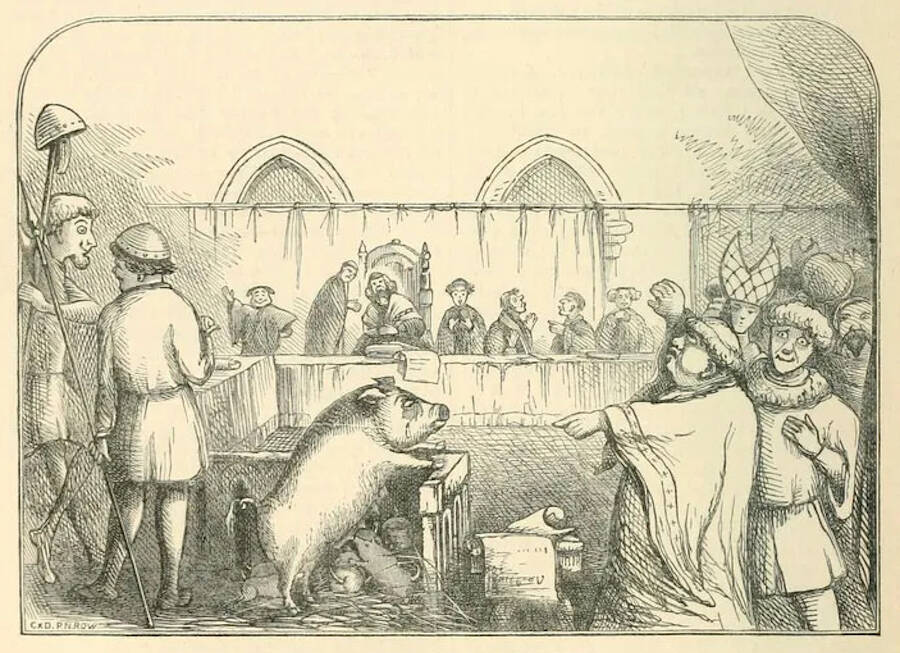Animal Trials And Executions Were Very Popular

Wikimedia CommonsThe bizarre effort of trying animals in court spanned from the 13th to 18th century.
The right to a fair and impartial trial by a jury of one’s peers remains one of the most sacred tenets of jurisprudence in America. It provides the accused with trust in the judicial system and the hope that their fate isn’t determined by a biased judge. While animals have no notion of this, they were still tried in Medieval Europe.
According to historian Edward P. Evans and his 1906 book The Criminal Punishment and Capital Prosecution of Animals, even unruly rats were “sent a friendly letter of advice in order to induce them to quit any house, in which their presence is deemed undesirable.” This dynamic most famously also affected pigs.
The most well-documented case in that regard was spurred by the death of a five-year-old boy in 1457 in Savigny, France. Villagers witnessed one sow and six of its piglets fatally attack the child, leading to a full-blown trial replete with two prosecutors, eight witnesses, a judge — and a defense attorney for the adult pig.
With witness testimonies and blood spatter on the swine, the court easily ruled that the pig had fatally attacked the deceased child. The piglets, meanwhile, were exonerated due to their young age. In the end, the sow was was hanged by her hind feet from a makeshift gallows on a tree.
While animal trials in the Middle Ages may appear extreme today, they once dominated untold hours of courthouse appointments. It only required criminal complaints for animals like goats, horses, and dogs to be subjected to these proceedings — and be slaughtered or hanged for their alleged misconduct.
The reasoning behind this was comparable to the medieval burning of cats. European Christians of the Middle Ages believed God had granted them dominion over Earth and that they were in charge of ensuring a rigid hierarchy of laws regarding earthly behaviors. Fortunately, the practice has long been made illegal.





